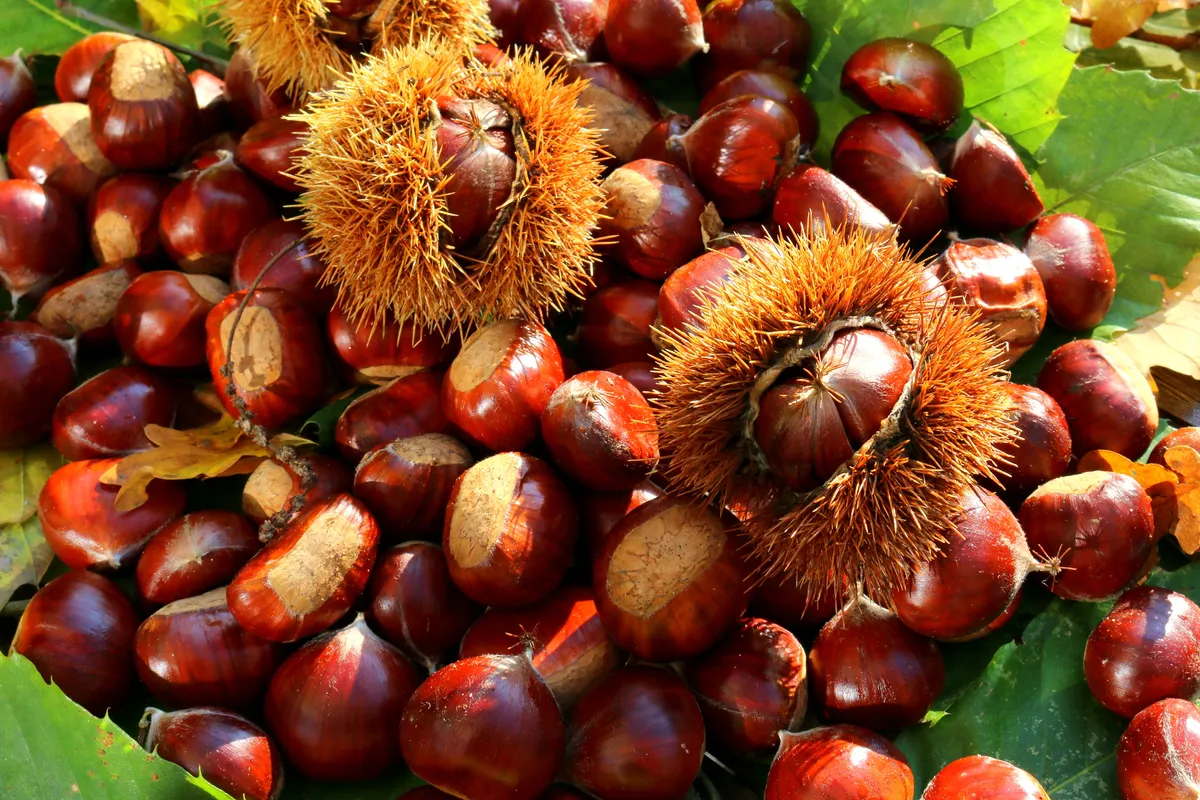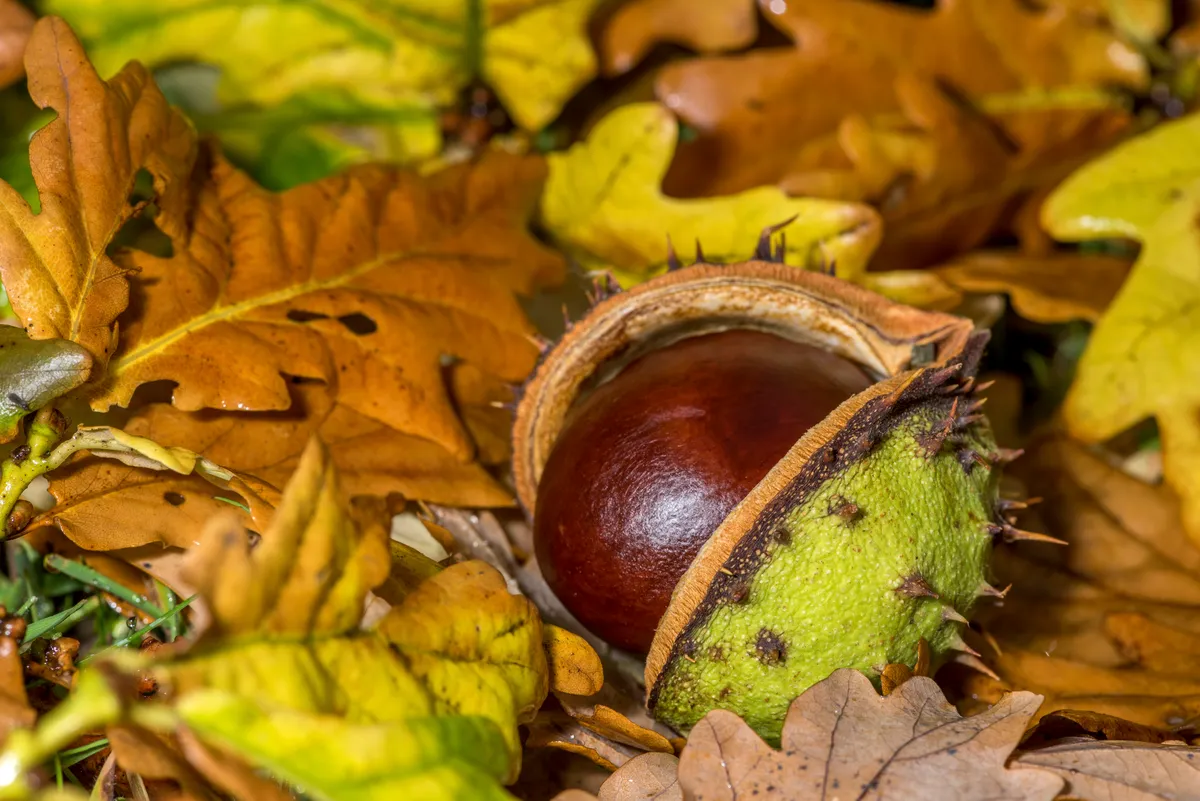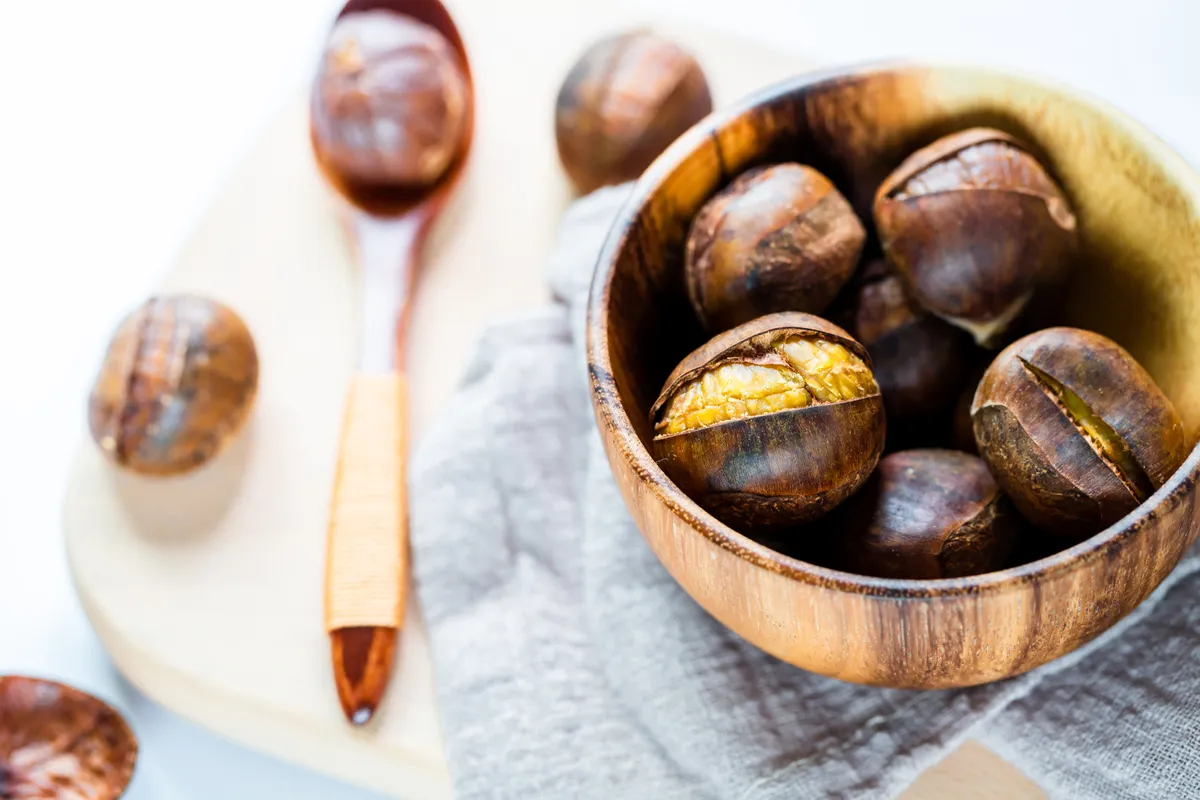The best time for foraging for sweet chestnuts is late autumn, which makes this delicious delicacy from the forest a perfect treat to enjoy when the nights are drawing in.
They are high in dietary fibre, which helps to regulate cholesterol levels, and, unlike other nuts, they are low in protein and fat. Their richness in vitamin C also means that they are an antioxidant and contribute to a healthy immune system.
Sweet chestnuts are easy to distinguish from horse chestnuts (also known as conkers) because their shells are yellow and spiky – often described as looking like small hedgehogs – rather than green and thorny-looking.


To harvest, search the ground beneath sweet chestnut trees for cases that have fallen. You might want to bring gloves with you when you’re foraging as the shells are very prickly.
In their shells, chestnuts keep for a week at room temperature, but if you want to keep them any longer, refrigerate them in a paper bag for up to three weeks.

 This is a recipe from Go Wild: Find freedom and adventure in the great outdoors by Chris Naylor, published by Summersdale.
This is a recipe from Go Wild: Find freedom and adventure in the great outdoors by Chris Naylor, published by Summersdale.


